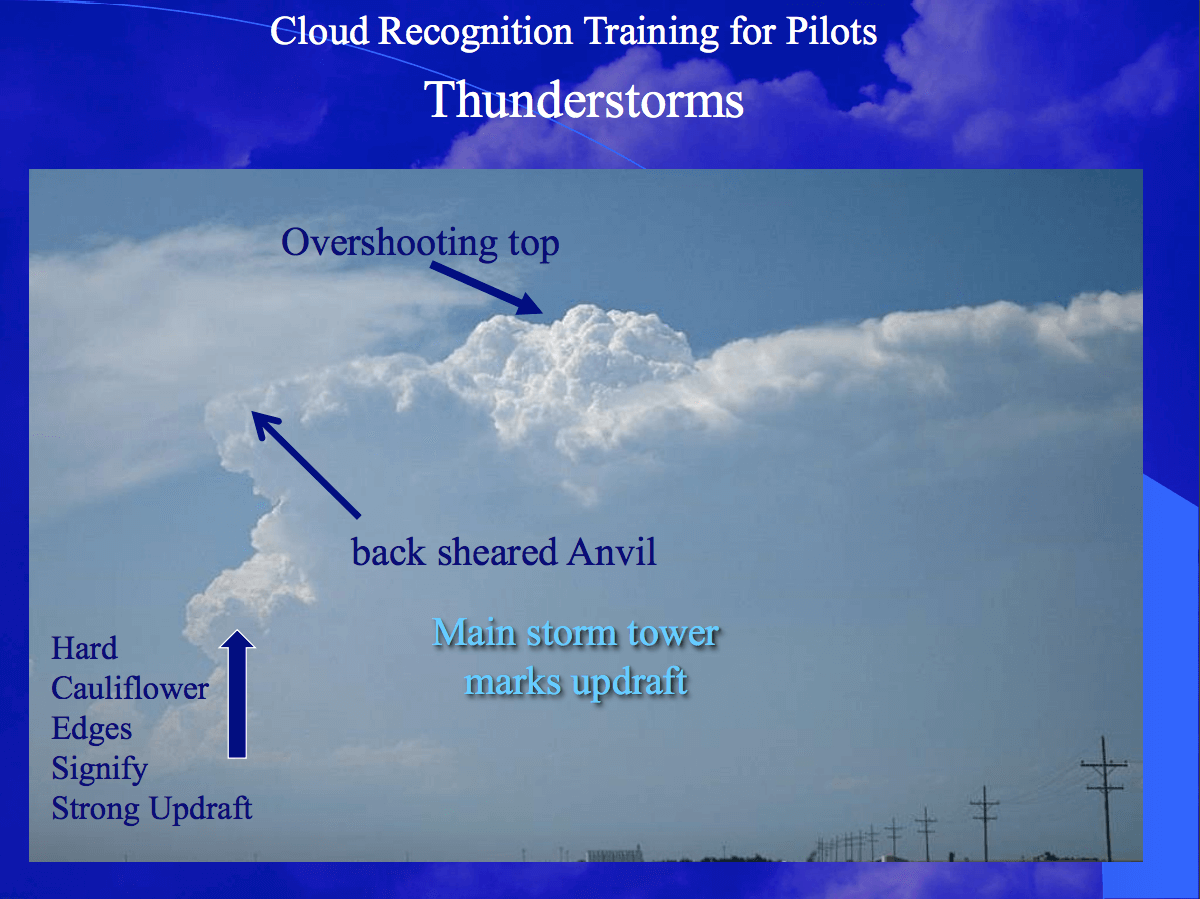Convective cloud conundrums and solutions.
As we previously discussed in our turbulence blog, all cumulus clouds, particularly towering cumulus, provide visual aids for areas you may wish to avoid. On top of turbulence, another hazard of cumulus clouds is their large potential to host a thunderstorm and show the large potential for a convective condition. Today, we will discuss visual indications of a thunderstorm and how you can avoid them.
A cumulus holds a major threat of becoming a thunderstorm once a warm air updraft builds the cumulus cloud vertically. When the cumulus transitions into a convective cloud, it can building up to and sometimes exceeding 3,000 ft/min. During this building process, water droplets in the cloud come together to form large raindrop-sized clusters. Once these droplets get too heavy to stay in the cloud, they fall creating a cold wind downdraft within the cell. This generates strong, gusty surface winds and a rapid rise in air pressure. This is known as the mature stage of the storm and it holds the greatest hazards for airmen when the cloud has reached this developmental state.

(From the Southwest Aviation Weather Safety Workshop 2010 Aviation Hazard Awareness Training, Cloud Recognition Training for Pilots slideshow on weather.gov)
Thunderstorms bring severe to extreme turbulence, low level wind shear, microbursts, icing, hail, and strong surface winds (30 knots or greater). An easy identifier of a thunderstorm cloud is their hard cauliflower edges (indication of a strong updraft) and overshooting top or building state. It is important to stay clear of thunderstorms to avoid the many dangers that come with them.
To avoid any aircraft related thunderstorm dangers, stay at least 20 miles away from a severe thunderstorm. If you see the hard, cauliflower edges on a building cumulus cloud in your flight path, immediately reroute and circumnavigate the storm by contacting ATC.
Pilots need the knowledge and acumen to determine when to reroute and when to push forward when identifying clouds. Now gaining this knowledge has never been easier with CTS’s online courses. Our basic indoctrination training subjects provide the information needed to fly along with the flexibility that pilots desire. Learn more about our Part 135, Part 125, and Part 91K training programs by calling 316.265.1585 today!
RELATED READING









